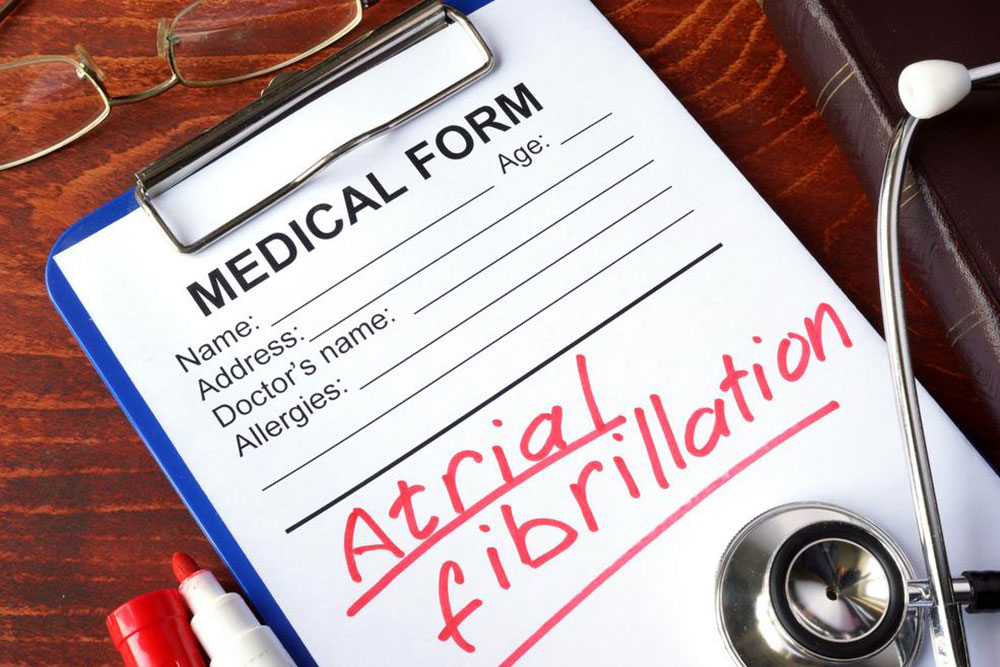Comprehensive Strategies for Managing Atrial Fibrillation: A Guide to Heart Rhythm Control and Stroke Prevention
This comprehensive article explores the latest strategies for managing atrial fibrillation, including rhythm restoration techniques like cardioversion, medication management for heart rate and rhythm control, stroke prevention with anticoagulants, and emerging technologies like catheter ablation and wearable devices. It emphasizes personalized treatment plans to improve patient outcomes and prevent serious complications associated with AFib. Whether you are a patient or healthcare provider, understanding these management options is crucial for effective treatment and enhanced quality of life.

Effective Management Strategies for Atrial Fibrillation
Atrial Fibrillation (AFib) is one of the most common and complex cardiac arrhythmias affecting millions worldwide. It is characterized by irregular and often rapid heartbeats, which can lead to severe complications such as strokes, heart failure, and diminished quality of life. Understanding the latest management strategies for AFib is crucial for patients and healthcare providers to optimize treatment outcomes and improve long-term health.
Statistics reveal that approximately 27% of the population in the United States suffer from AFib, making it a significant public health concern. The disorder develops from various underlying factors, including high blood pressure, elevated cholesterol levels, blood sugar imbalances, and other cardiovascular risks. Blood thickening and clot formation are common in AFib, significantly increasing stroke risk. Consequently, effective management revolves around restoring normal heart rhythm, preventing blood clots, and controlling heart rate.
Restoring and maintaining a normal heart rhythm is a cornerstone in AFib therapy. Various methods, including electrical and pharmacological techniques, are employed to achieve this goal. The choice of treatment depends on individual patient profiles, including age, symptom severity, presence of other medical conditions, and response to previous therapies.
Restoration of Normal Heart Rhythm: Cardioversion Techniques
One of the primary procedures to re-establish a normal heartbeat is cardioversion, which can be performed either electrically or with medications. Both methods aim to reset the electrical impulses of the heart, restoring a synchronized rhythm and alleviating symptoms.
Electrical Cardioversion: This technique involves delivering a controlled electric shock directly to the heart muscle through paddles or adhesive patches placed on the chest. The shock momentarily halts the abnormal electrical activity, allowing the heart's natural pacemaker to re-establish a normal rhythm. Electrical cardioversion is usually performed under sedation or anesthesia to ensure patient comfort and is often scheduled in a hospital setting for safety and monitoring.
Pharmacological Cardioversion: Anti-arrhythmic drugs are administered either orally or intravenously, typically in a hospital or specialized clinic. These drugs stabilize the electrical activity of the heart, helping to convert AFib into a normal sinus rhythm. Prior to pharmacological cardioversion, patients are often prescribed blood thinners to mitigate the risk of blood clots, which can form during irregular heartbeats and lead to strokes.
Post-Procedure Management and Long-Term Control
While cardioversion can effectively restore normal rhythm, maintaining this state over the long term often requires additional medication management. Anti-arrhythmic drugs such as amiodarone, sotalol, or flecainide may be prescribed for ongoing rhythm control. However, these medications can cause side effects like fatigue, dizziness, or other more serious complications, necessitating regular monitoring and follow-up with healthcare professionals.
Despite successful cardioversion, AFib episodes may recur, highlighting the importance of comprehensive management strategies. Patients often need a combination of therapies tailored to their specific health profile to reduce recurrence risk and improve quality of life.
In addition to rhythm control, rate control is vital. Medications such as beta blockers (e.g., metoprolol), calcium channel blockers (e.g., diltiazem, verapamil), or digoxin help manage the heart rate during AFib episodes. These drugs are particularly effective at rest but may have less benefit during physical activity, requiring careful dosage adjustments and monitoring.
Side effects of rate control medications—such as low blood pressure, fatigue, or worsening of other cardiac conditions—must be balanced against their benefits. Regular assessment and personalized treatment plans help optimize outcomes.
Preventive Measures and Stroke Risk Reduction
An essential aspect of AFib management is preventing stroke, which remains one of the most serious complications. Blood thinners, including warfarin and novel oral anticoagulants (NOACs) or direct oral anticoagulants (DOACs) such as rivaroxaban, apixaban, and dabigatran, are prescribed to reduce clot formation risks. These medications require careful monitoring to balance the risk of bleeding against stroke prevention benefits.
In some cases, lifestyle modifications—such as weight management, dietary adjustments, smoking cessation, and regular exercise—play a crucial role in managing AFib. Controlling underlying risk factors, including hypertension, diabetes, and high cholesterol, can significantly decrease the likelihood of episodes and stroke.
Emerging Technologies and Future Directions in AFib Management
Advances in medical technology continue to expand the options available for AFib treatment. Catheter ablation, a minimally invasive procedure that destroys the areas of the heart responsible for abnormal electrical signals, has gained popularity for patients with recurrent AFib or those intolerant to medication. This procedure offers hope for long-term rhythm control and improved quality of life.
Furthermore, wearable devices and remote monitoring tools enable continuous tracking of heart rhythms, allowing for timely intervention and personalized treatment adjustments. Telemedicine consultations facilitate ongoing management and patient education, ensuring better adherence and outcomes.
Research into genetic factors, novel pharmacologic agents, and targeted therapies promises to further refine AFib management in the future, potentially reducing the burden of this arrhythmia and its associated complications.
In conclusion, managing atrial fibrillation requires a comprehensive and individualized approach. Combining rhythm restoration techniques, rate control medications, stroke prevention strategies, lifestyle modifications, and technological innovations can significantly improve patient outcomes. Patients should work closely with their healthcare team to develop a tailored treatment plan that maximizes benefits and minimizes risks, ultimately enhancing their quality of life.





